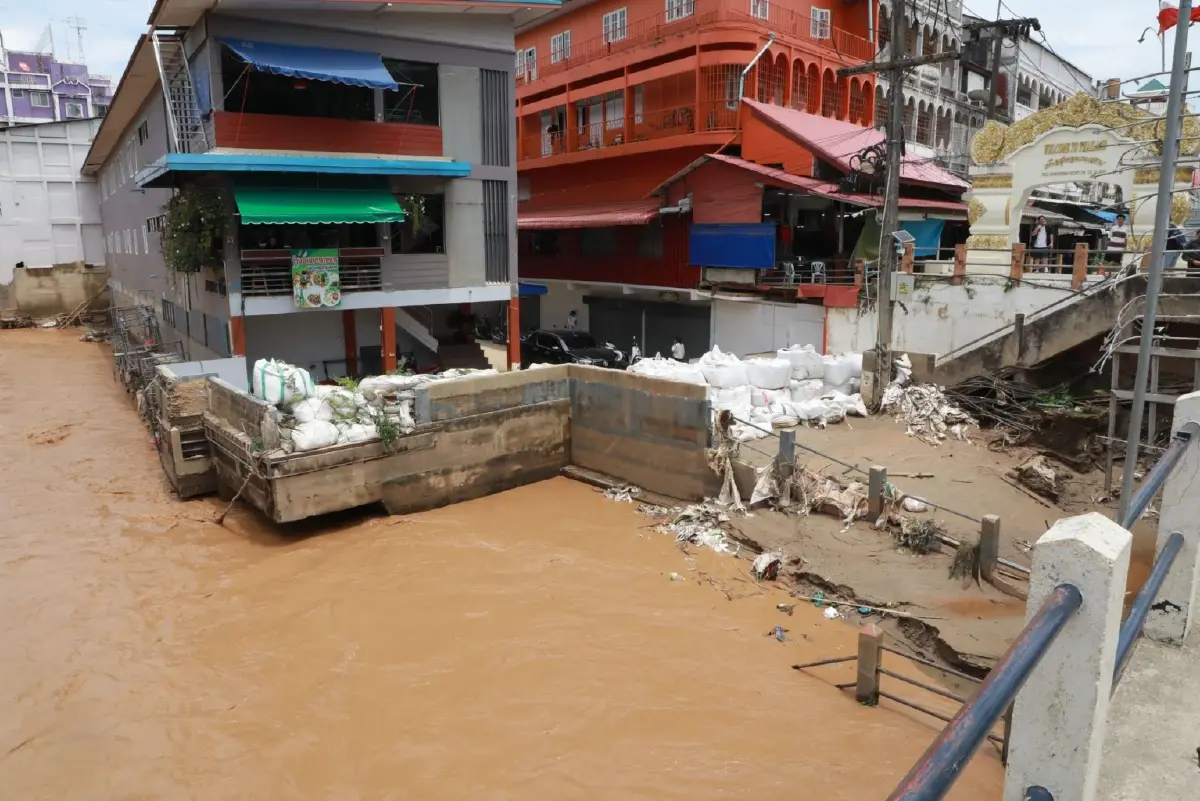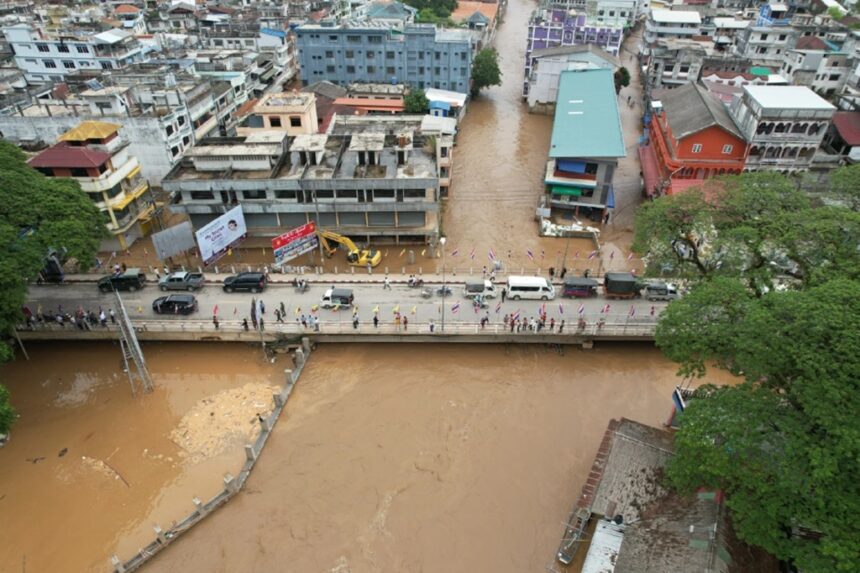Chiang Rai – On Monday, Mr Phasakorn Boonyaluck, Director-General of the Department of Disaster Prevention and Mitigation, visited the Mae Sai border checkpoint in Chiang Rai. He was joined by Mr Charin Thongsuk, Chiang Rai’s Governor, and a team who checked the situation at the Sailom Joy Market in Mae Sai after recent flooding.
Mr Phasakorn explained that the flooding at Sailom Joy Market and Mailungkhon community in Mae Sai began on the afternoon of 29 April 2025. Heavy rain in Jotada village, Tachileik, Myanmar, led to water flowing into Mae Sai, Chiang Rai.
The water at the market reached about 15 to 20 centimetres. Mr Anutin Charnvirakul, Deputy Prime Minister and Minister of Interior, expressed concern about the situation and any possible impact on residents. He directed Mr Phasakorn to visit and monitor the situation closely. Governor Charin also made an urgent visit yesterday to assess the situation and help with the response.

The rainfall measured 69 millimetres, which isn’t a huge amount. However, the Sai River was clogged with sediment from past floods, causing water levels to rise and spill into some parts of the community. Luckily, there were no injuries or damage to property.
The main problem was the temporary rise in water. Sediment build-up from earlier floods and recent work by military engineers, who removed big sandbags and cleared parts of the creek, caused water to briefly back up into Sailom Joy Market.
The water started to recede, and things returned to normal within two to three hours.
To address the issue yesterday, the Royal Thai Army Engineers and local agencies placed more big sandbags in key spots along the creek. This temporary barrier helped protect the community and business areas most at risk.
Looking ahead, Chiang Rai Province plans to bring in heavy machinery to clear the Ruak River, which will improve the water flow and help prevent future floods. This work, done in agreement with Myanmar, will also include shoring up the Sai River banks. The target is to finish everything by 20 June 2025.
Yesterday, the Interior Ministry’s Disaster Prevention and Mitigation Department called a meeting with heads of disaster offices from 17 northern provinces, both upper and lower regions, as well as four disaster zone centres.
These included regional centres in Chiang Rai, Kamphaeng Phet, Lampang, and Phitsanulok. The main focus was on planning for the rainy season. The department will send in extra resources and heavy machines, like boats, water pumps, and high-clearance vehicles, to help out if floods hit northern Thailand.
These machines will move from central and eastern areas where there is no flooding yet, as heavy rain usually starts in up north and moves south. Preparations are already underway to deal with any upcoming floods.
Mr Phasakorn added that the department is working hard to get everyone ready for the next round of flooding, especially in northern areas expected to be affected first.
According to experts, the flood in Mae Sai comes from a significant volume of floodwater that originates from the Sai River’s headwaters in Myanmar’s Shan State. Heavy rain in Myanmar, combined with upstream forest degradation and exposed soil from Chinese gold mining activities, leads to rapid runoff and mudslides that flow into Mae Sai.
Uncontrolled urban expansion has reduced the Sai River’s natural water retention areas. Structures on both Thai and Myanmar riverbanks, particularly near the Thai-Myanmar Friendship Bridge, have narrowed the river’s channel, increasing flood risk.
Insufficient infrastructure, such as flood walls or drainage systems, has left Mae Sai vulnerable. Existing levees have been breached during high water flows, and emergency measures like sandbags have proven inadequate
These factors combined to cause severe flooding, described as the worst in decades, with significant damage to communities and markets like Sai Lom Joy.















